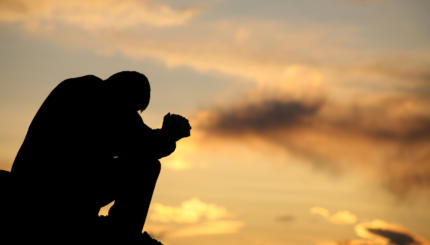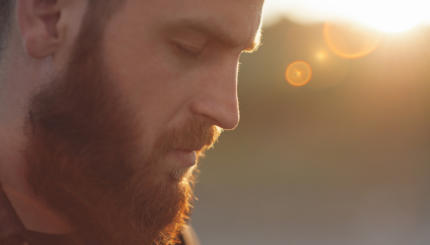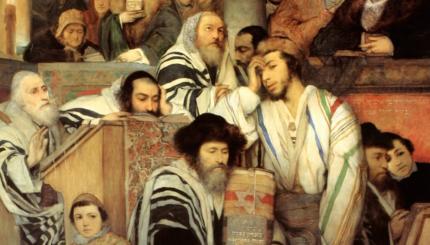Rabbi Millgram speaks about pre-modern synagogue buildings, but his description of the features of synagogue interiors could just as well have been expressed in the present tense, with a few exceptions: Contemporary synagogues feature many windows, often very large, and in the past few centuries, many ornate and elaborate synagogues have been constructed.
Reprinted with permission from Jewish Worship, published by the Jewish Publication Society.
In respect to its architecture the synagogue has at no time reflected any uniquely Jewish style. Being aliens everywhere, the Jews did not build with an eye to permanence.
Diaspora Conditions Often Dictated Modesty
Historians have characterized the medieval Jewish economy as one of liquid cash. The Jew never knew when he would have to pack up and wander forth to a new temporary home. Architectural style was therefore not a primary consideration. In addition, the vast majority of Jews were very poor, this despite their supposed wealth. Unless there was a wealthy patron, the general poverty of the community dictated extreme economy.

Help us keep Jewish knowledge accessible to millions of people around the world.
Your donation to My Jewish Learning fuels endless journeys of Jewish discovery. With your help, My Jewish Learning can continue to provide nonstop opportunities for learning, connection and growth.
Because there were some countries where Jews were not permitted to own land, synagogues were held by non-Jewish trustees or were leased on short terms. Under such conditions elaborate architectural structures were not prudent, and the development of a definitive architectural style was unlikely. Modesty to the point of drabness was the prevailing policy.
Unlike the cruciform of the church, the architectural shape of the synagogue lacked symbolic meaning. The synagogue was usually oblong or square, and its external appearance was usually unobtrusive. Especially in medieval Europe, anonymity and concealment were the better part of wisdom.
Conditions Permitting, Tall Was Good
In the Eastern lands the situation of the Jews was more stable. The Babylonian [BT] therefore specifies that the synagogue be the tallest building in town–and st ly admonishes that any city in which the roofs are higher than the synagogue will eventually be destroyed (Shabbat 11a). This provision, however, was seldom possible of execution, especially in the Christian countries where the Church appropriated this prerogative for itself. Woe to the Jewish community that dared build a synagogue taller than the local church.
Still, there were synagogues that dared compete with the dominant faith. They achieved their humble victory by building downward so that the synagogue was “taller” than the church within the structure. Building the synagogue partly below the ground also fulfilled the words of the psalmist: “Out of the depths have I called Thee, O Lord” (Psalm 130:1). This principle also found expression in having the spot where the reader stood somewhat below the synagogue floor, so that he could literally cry out to God “out of the depths.”
Windows–Prescribed, But Sometimes Foregone
The Talmud also requires that synagogues always have windows (BT Berakhot 31a). The rabbis based this ruling on the example of Daniel’s place of prayer in which, the Bible says, “his windows were open in his upper chamber” (Daniel 6:11). A modern interpretation of this rabbinic requirement was given by the late Rabbi Kook. The windows in the synagogue, said Rabbi Kook, are to teach us that during our prayers we must be aware of the outside world. A Jew must not withdraw from the world and pray only for his own needs. But this architectural pattern, too, was not always followed. Windows at times were a liability because the prayers might be heard without and be considered an affront to the sensibilities of the non-Jews.
The Synagogue Interior–Functional, with Symbols
The interior of the synagogue was relatively simple and functional. It was devoid of such bold religious symbols as statues, crosses, crucifixes, icons, censers, fonts, relics, or reliquaries. In comparison with some houses of worship, the synagogue was simplicity itself. But it was not lacking in meaningful symbols.
Functionally the synagogue was well adapted to the usages of the tradition. This became evident the moment one crossed the synagogue threshold. The most striking object, located in the center of the synagogue, was the bimah, the raised platform on which the was read. This boldly emphasized the central role of Torah in the synagogue worship. In the modern American synagogue the bimah has all but vanished. The platform in front of the synagogue has replaced the bimah, and the symbol of the Torah’s centrality has been obliterated.
The second prominent fixture of the synagogue interior was the aron ha-kodesh, the holy ark, wherein the Torah scrolls were kept. Originally there was only a chest with several shelves on which the scrolls were kept in a lying position. The chest was in a side room, and a curtain set it off from the congregation. During the talmudic period the chest was moved to the center of the east wall and made into a fixed part of the synagogue structure. The scrolls were appropriately adorned and were arranged in a standing position so that they could be seen when the ark was opened. The doors of the ark, too, were ornamented with lions and the tablets of the Ten Commandments. The curtain in front of the ark, known as the parokhet, became an essential adjunct of the ark in imitation of the tabernacle built in the desert. The Bible tells us that Moses “put up the curtain … and screened off the Ark” (Exodus 40:21). In the Jerusalem Temple, too, the Bible informs us that Solomon “made the veil” for the ark (2 Chronicles. 3:14).
Another symbol that was transferred from the ancient tabernacle and from the Jerusalem Temple was the eternal light. Here, too, the Bible records that one of the priestly duties was to keep the candelabrum lit “before the Lord [to burn] regularly” (Lev. 24:4). In the synagogue the eternal light (made of gold, silver, or burnished brass, depending on the opulence of the donor) hung in front of the ark and burned constantly. It symbolized the spiritual enlightenment which is forever emanating from the Torah.
Synagogue Art–The Ancients Had More
No permanent place of worship is devoid of some form of artistic expression. The synagogue was no exception. In addition to the adornments of the scrolls of the Torah and the ark, there were also decorations on the walls and floors. A number of ancient synagogues going back to the talmudic period have recently been excavated, among them the sixth century synagogue at Bet Alpha [in Northern Israel], with its beautiful mosaics depicting birds, animals, and human figures.
The most important of synagogue excavations was that of the Dura-Europos synagogue, which was erected in [Syria in] 245 C.E. This discovery revealed an ancient synagogue art of surprising beauty and originality. The frescoes and mosaics contain symbols of the zodiac, biblical scenes, and geometric figures. The murals are the earliest representations of biblical scenes on so large a scale, and they are regarded as the prototypes of Christian art. Among the panels are a number of colorful scenes from the Bible, such as the prophet Samuel in the Tabernacle of Shiloh (1 Samuel 3) and the three youths in the fiery furnace (Daniel 3). Apparently the Jews of the talmudic period did not refrain from adorning their synagogues with pictures of human beings, at least not in the third century C.E., when the Dura synagogue was erected.
In later centuries, however, the bias against human forms as synagogue decorations grew and in time prevailed. Such decorations came to be regarded as contrary to the second commandment: “You shall not make for yourself a sculptured image, or any likeness of what is in the heavens above, or on the earth below, or in the waters under the earth” (Exodus 20:4). But the religious authorities were not consistent. Lions and eagles as synagogue decorations were to be found everywhere.
The restriction on synagogue art resulted in an increasing reliance on Hebrew inscriptions for decorative purposes. These inscriptions served a dual purpose: they embellished the synagogue and edified the congregation. As an adornment Hebrew script, like Arabic, is an exquisite art form. As edification, the quotations utilized were mostly biblical verses suitable for creating a proper mood for prayer. The most frequent inscription was “Know before whom you stand” (Berachot 28b). Others were “How lovely are Thy tabernacles, O Lord of hosts” (Psalms 84:2); “0 give thanks unto the Lord, call upon His name” (Psalms 105:1); “O Lord, hear my prayer” (Psalms 102:2); and many similar quotations.
Occasionally the glass windows were decorated with symbolic forms, but that was rare. Synagogue windows were usually few and small and their function strictly utilitarian. They were meant to admit some light and in warm weather some fresh air.


